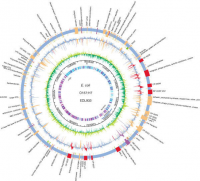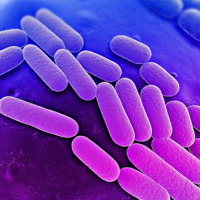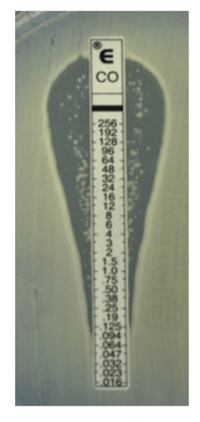Team I Genome Assembly Group: Difference between revisions
| Line 53: | Line 53: | ||
=== Pre-processing === | === Pre-processing === | ||
==Library Prep== | ====Library Prep==== | ||
== Trimming == | == Trimming == | ||
Revision as of 14:08, 28 February 2018
The group is conducting its discussions, planning, etc. on the Open Academic Environment. Our group is public.
Introduction
Bacterial Genomics
Figure 1. Bacterial Genomics [1]
Bacterial genomics is the discipline that studies the genome of a bacteria and includes all hereditary information of that bacteria. Bacterial genomics helps study bacterial evolution as well as determine the causative agent in disease outbreaks. Additionally, it helps identify bacterial pathogens (and antibiotic resistance) and how these pathogens interact with their host.
Figure 2. Klebsiella (http://healthcare.bioquell.com)
Features of Klebsiella[2]:
Klebsiella is a gram negative, non-motile rod shaped bacteria enclosed in a capsule (helps evade phagocytosis). These bacteria can be found singly, in pairs or as short chains. Klebsiella are facultative anaerobes (oxidase negative) and can perform both anaerobic respiration and fermentation. They are found in water, soil, and on plants and include those that help plants fix nitrogen.
Species of Klebsiella, especially Klebsiella pneumoniae, are known to cause respiratory tract infections such as pneumonia and urinary tract infections. They release a number of virulence factors such as multiple adhesins, capsular polysaccharide, siderophores, and lipopolysaccharide that help resist host defenses.
Assembly
Assembly is the process of combining sequence reads into contiguous stretches of DNA called contigs.
Data
We downloaded 258 Klebsiella spp. (paired-end reads; 250 base pairs in length) from NCBI SRA database.
Objective
This study on Klebsiella spp. is motivated by finding of Colistin heteroresistance in K. pneumoniae.
Figure 3. Heteroresistant subpopulation [3]
Resistance of bacteria against various antibiotics has been noted since the discovery of antibiotics and it has been on a rise since then. This poses a challenge to treat patients that have acquired these multidrug resistant bacterial infections, especially immunocompromised patients, who become susceptible to opportunistic pathogens that have resistance to virtually all antibiotics currently available. Many strains of Klebsiella pneumoniae identified to be resistant to all major antibiotics. Some of the resistance strategies used by this bacteria include release of carbapenem-hydrolyzing enzymes, oxacillin hydrolyzing enxymes, beta lactamases including plasmid-borne extended spectrum beta lactamases. Multi resistant K. pneumoniae (MRKP) have been found to resist third generation antibiotics such as cephalosporins, gentamycin, and tobramycin.
As the scientific and pharmaceutical world is battling against these antibiotic resistant strains, a new phenomenon has been discovered, Heteroresistance. According to Valvano et.al., heteroresistance is a variable response showed by a population to a specific antibiotic [4]. Bacterial heteroresistance is a phenomenon that has been known for a while, but the actual mechanism of acquiring this resistance is unclear. Many mechanisms have been attributed to heteroresistance including a mutation in the gene of the PhoP protein involved in the PhoP/PhoQ pathway to gain resistance to colistin.
The current study focuses on Klebsiella spp. that have been found to be genetically identical lacking the above mentioned mutation in the PhoP protein. "Genetically identical, but phenotypically distinct, subpopulation of colistin-resistant bacteria can mediate in vivo treatment failure" --David Weiss.
Methods
Pipeline (general workflow)
Pre-processing
Library Prep
Trimming
Assembly
Algorithms
Burrows–Wheeler Transform(BWT)
De Bruijn graph
Results
Discussion
Conclusions
References
1. Perna, Nicole T., Guy Plunkett III, Valerie Burland, Bob Mau, Jeremy D. Glasner, Debra J. Rose, George F. Mayhew et al. "Genome sequence of enterohaemorrhagic Escherichia coli O157: H7." Nature 409, no. 6819 (2001): 529.
2. Bergey, David Hendricks, Robert Stanley Breed, Everitt George Dunne Murray, and A. Parker Hitchens. Bergey's manual of determinative bacteriology. Baltimore: Williams & Wilkins, 1934.
3. Jayol, Aurélie, Patrice Nordmann, Adrian Brink, and Laurent Poirel. "Heteroresistance to colistin in Klebsiella pneumoniae associated with alterations in the PhoPQ regulatory system." Antimicrobial agents and chemotherapy 59, no. 5 (2015): 2780-2784.
4. El-Halfawy, O. M., and Valvano, M. A. (2013) Chemical communication of antibiotic resistance by a highly resistant subpopulation of bacterial cells. PLoS One 8, e68874



